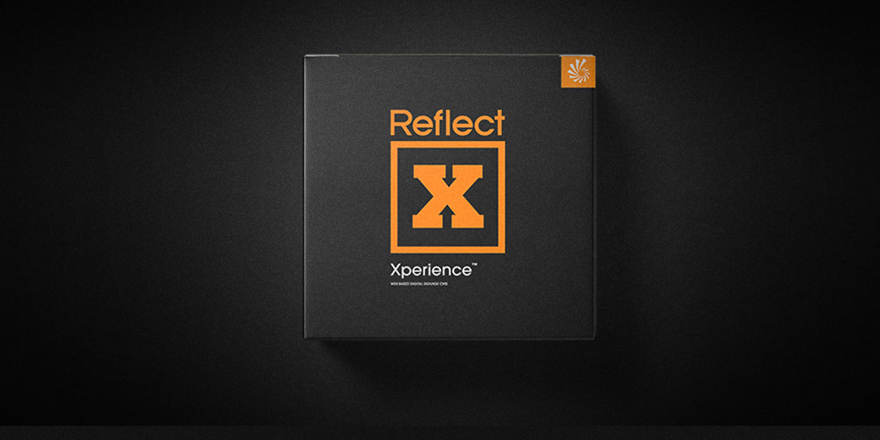Tips from the Pros - How to navigate large scale rollouts [in partnership with Legrand AV]
As the saying goes, "If you fail to plan, you plan to fail." This couldn’t be truer when it comes to deploying and implementing large-scale digital projects. From discovery and objective setting to architectural, infrastructure, and network review, our team at Creative Realities Inc. (CRI) and our strategic partner Legrand AV have outlined a streamlined process that increases predictability, speed, and reduces the risk of unanticipated issues along the way.
We had the opportunity to sit down with our own Mike Trzinski (Vice President of Technical Delivery) and Chris Neukam (Vice President, Supply Chain & IT), along with Brian Mungo (National Account Manager) from Legrand AV, to discuss the essential components of a successful large-scale rollout. These experts share insights on planning across all phases of a digital signage deployment, offering strategies for troubleshooting common issues that may arise during the process.
Q: What are some of the vital components that go into planning a large-scale digital signage rollout, and why are they crucial?
Mike Trzinski (CRI): The key to getting ready for a large-scale deployment is planning in advance. You need to understand your purchasing and procurement schedules and know your logistics. Large-scale rollouts cover wide geographic areas, and each location can present unique challenges. Having a solid plan in place for installation labor, and making sure everything is ready once materials arrive on-site, is crucial. While it sounds basic, few companies have a project management team that can accomplish this efficiently across such a large scale.
Brian Mungo (Legrand AV): From a manufacturing standpoint, the communication feedback loop between partners like CRI and us at Legrand is very important. CRI collects information from the field, brings it back to their internal team, and shares it with us. This allows us to align our manufacturing processes with their deployment schedule and prevents headaches for everyone.
Q: How important is it to set clear objectives and goals before beginning a digital signage project?
Mike Trzinski (CRI): Setting clear objectives is absolutely necessary. You need to understand the customer’s needs and the scope of the project before diving into logistics. If customers don’t have the ability to receive materials or if their site has logistical barriers, those factors can severely impact the success of a rollout. The earlier you have a clear picture of those factors, the better, because that allows you to craft a plan that meets the customer’s needs while managing expectations.
Chris Neukman (CRI): Mike’s right. I would add that it’s also crucial to manage internal expectations and identify potential roadblocks in advance. One of the things that we must do is set clear cut expectations with our internal customers, those project managers, so that we have a clear understanding on what criteria we need to be meeting when we deliver to a location. For example, if a site isn’t ready because a concrete pad hasn’t been poured yet, we might have to offload materials at a staging location. Or, if we’re dealing with a specific delivery window—say overnight—we need to account for that in the planning stages.
Q: What’s the importance of a strong manufacturer-integrator relationship in digital signage rollouts?
Chris Neukman (CRI): The relationship is everything. We rely on manufacturers to help us scale when we need to. If there’s an unforeseen issue, having a trusted partner that we can turn to makes a huge difference. They can help us stage products or find alternative solutions, which is something you don’t always get from a traditional brick and mortar reseller. We trust each other, and that trust allows us to move quickly and efficiently.
Brian Mungo (Legrand AV): Exactly. The partnership removes barriers. When CRI makes our lives easier, we make theirs easier, too. It’s about mutual investment. Having multiple layers of relationships—between senior leadership, project managers, and even purchasing—means that when a problem arises, we’re aligned and ready to address it. If there's that trust and understanding in the relationship that we're mutually investing in each other and it benefits us equally, a synchronization happens between two organizations that allows them to move in the same direction, achieve the same goals. That comes over years of working together and plenty of trial and error. But once you have that, it makes the whole process easier and quite frankly more enjoyable, and I think it's reflected to the end user in most situations as well. I think they can perceive that because the result is better for them, too.
Q: What are some common mistakes companies make when planning large-scale digital signage deployments?
Mike Trzinski (CRI): A big mistake is not understanding logistics timelines and how those align with budgets. Some people think you can get pallets of goods across the country overnight without blowing your budget, which simply isn’t possible. Misunderstanding these timelines can create big issues down the road, but even more to it, not communicating timelines creates even bigger problems. So communicating those timelines correctly and effectively with the customer helps everyone stay aligned.
Brian Mungo (Legrand AV): Even if it’s a tough conversation, those conversations need to happen early on. Otherwise, you’re setting everyone up for frustration when things don’t go as expected.
Chris Neukman (CRI): Another mistake is underestimating the amount of product that needs to be delivered. Sometimes, customers don’t realize the scale of what they’re receiving. If a customer can’t accept 26 pallets of material on a specific date, or the site isn’t prepared for the delivery, it causes delays. We’ve had to plan around things like events happening at arenas or venue restrictions, which weren’t initially considered.
Q: Can you discuss a bit about the role of the end user (decision maker and buyer) at this point in the process, and how vital is their input?
Mike Trzinski (CRI): As you approach the end of a project, the client needs to have all the necessary operational information to use the product. We’ve mentioned it before and I’ll mention it again – effective communication is key. Simply handing over the documentation isn’t enough. You need to discuss it and ensure they understand how to use it. This directly impacts day two support, as a lack of clear communication can lead to issues post-installation. If the first call you get is about how to use the product, that's a failure in the handover process.
Q: How does content planning fit into the deployment process, and when should it be addressed?
Mike Trzinski (CRI): Content—and the consideration of a digital signage CMS platform—matters from day one. Everything we’re doing revolves around the content that will be displayed, so our content team works hand-in-hand with our installation team. We can’t separate the two processes; they have to be integrated from the start. Consumers aren’t looking at the technology—they’re looking at the message and the overall media network. The infrastructure is critical, but the content drives decisions about how the technology will be run, managed, and maintained over the life of the project.
Q: What role does site assessment play in ensuring a successful deployment?
Brian Mungo (Legrand AV): Site assessments are critical to the success of the deployment. They allow us to understand the unique challenges that come with each location and provide solutions in advance, rather than being reactive. Without the proper assessment, we’re shooting in the dark and that leads to wasted time, resources, and possibly expensive corrections. It’s about making sure we’re not just focusing on delivering the hardware but on ensuring that it’s functional and effective in its intended environment.
Chris Neukman (CRI): Exactly. One of the biggest issues we run into when site assessments aren’t done thoroughly is that we don’t know what logistical hurdles we’re going to face until we’re on-site. It could be something like poor line of sight for the screen, no power where we need it, or not enough infrastructure to support the install. If we’ve already done a site survey, we can anticipate those problems and address them before they become costly delays.
Q: What are the main considerations when selecting hardware for a large-scale deployment?
Mike Trzinski (CRI): Reliability. You want hardware that you know will last, and you need manufacturers you can trust. Picking a reliable partner reduces the risk of post-installation issues. We’ve seen companies choose cheaper options only to end up spending more on maintenance and truck rolls later on.
Brian Mungo (Legrand AV): Exactly. If you don’t pay for quality upfront, you’re going to end up paying for failed equipment later on. We’re always trying to innovate and create products that help integrators be more as sturdy and efficient as possible. For example, we’ve developed power solutions that allow remote monitoring and control, which can help prevent issues before they happen.
Q: What are the most common pain points during the installation phase, and how can they be avoided?
Mike Trzinski (CRI): Power and data surprises are the biggest issues. Sometimes, even with thorough planning, a site might not be ready for the installation due to unforeseen factors. Having a risk mitigation plan in place is critical. For example, we often stage alternative installation materials nearby, so if Plan A falls through, Plan B can be executed without significant delays.
Chris Neukman (CRI): Another common issue is tight delivery windows. Sometimes the customer changes the schedule last minute, or a shipment gets rejected by the site for any number of reasons. That’s why we always plan for backup stock and remain flexible with logistics to keep the installation moving forward despite any unexpected hurdles.
Brian Mungo (Legrand AV): I’d add that equipment failures or missing components can also cause delays. That’s where having a strong manufacturer-integrator relationship is key. If we run into an issue, CRI knows they can reach out, and we’ll have a solution on its way to them immediately, which minimizes downtime.
Q: What are some crucial post-installation steps to ensure long-term success?
Mike Trzinski (CRI): Another step is communicating the support process. Who should the customer contact for support? What’s the escalation path for different issues? We also have a client experience team that follows up after the installation to ensure everything is running smoothly. This feedback loop helps us improve future deployments and address any lingering issues.
Chris Neukman (CRI): Making sure the customer understands how to use the system is crucial. We’ve seen too many projects where the deployment is completed, but the user isn’t fully trained on how to operate the digital signage. That’s why we emphasize training and a strong handoff process to reduce support calls on day two.
Brian Mungo (Legrand AV): I’d also say it’s important to have a proactive maintenance plan. Keeping track of when equipment needs servicing or upgrades ensures long-term success and avoids costly disruptions down the road. We’re always ready to support those needs from the manufacturing side.
Mike Trzinski (CRI): Another important step is communicating the support process. Who should the customer contact for support? What’s the escalation path for different issues? We also have a client experience team that follows up after the installation to ensure everything is running smoothly. This feedback loop helps us improve future deployments and address any lingering issues.
Large-scale digital signage rollouts are complex and require careful planning across every phase. Setting clear objectives, mapping out logistics, building strong partnerships and conducting thorough site assessments are all necessary steps for a successful deployment. Foundational to the success of all these steps are clear communication, solid planning, and assembling the right team of trusted partners.
Ready to take the next step? CRI and Legrand AV specialize in large-scale rollouts and know how to help retailers reduce risks and achieve excellent results. Reach out to us to explore how we can bring your digital signage vision to life, and learn more about Legrand AV here. Tap here to see the BCTV use case that is our best practice of partnership in bringing a high-visibility, ad-revenue dependent large-scale rollout to life.
Share this
You May Also Like
These Related Stories

Reflect Xperience: How to Make Local Content for Digital Signage Work for You

How Smart Signage Platforms Solve the Menu Management Headache


